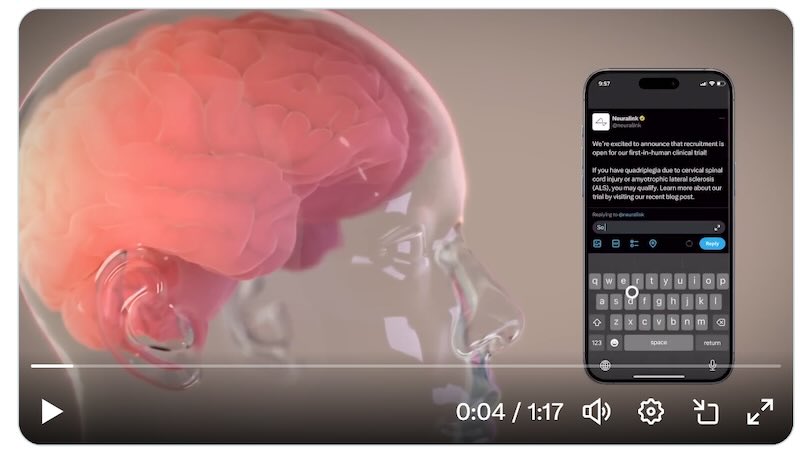Neuralink, the neurotechnology company founded by Elon Musk, has shared a groundbreaking update on its brain-computer interface (BCI) technology (Early progress with our second participant). With its second human recipient, Alex, now successfully implanted with the Neuralink chip, the company is making significant strides in its mission to enhance digital device control for individuals with quadriplegia.
Neuralink Second Brain Chip Implant: A Leap Forward in Neural Interface Technology
Neuralink Second Patient It’s 400 Electrodes this Time? Vs 1024 last time
The speed at which Alex adapted to the Neuralink interface is nothing short of remarkable. Within minutes of connecting his Link to a computer, he was able to control a cursor using only his thoughts. More impressively, Alex surpassed the maximum speed and accuracy he had previously achieved with other assistive technologies in just a few hours. This rapid progress culminated in Alex breaking the world record for BCI cursor control on his very first day of using the Link.
Alex’s experience with the Neuralink implant has opened up new possibilities for him. He has not only improved his ability to play video games, including the first-person shooter Counter-Strike 2, but has also ventured into the realm of computer-aided design (CAD). On just his second day with the Link, Alex designed a custom mount for his Neuralink charger using Fusion 360 software, which was subsequently 3D printed and integrated into his setup.
Neuralink’s commitment to continuous improvement is evident in the modifications made for their second participant. By implementing measures to reduce brain motion during surgery and minimizing the gap between the implant and the brain surface, the company has successfully mitigated the issue of thread retraction observed in their first participant, Noland.
Elon’s vision for Neuralink’s future is ambitious. He projects that hundreds of people could be using Neuralinks within a few years, potentially scaling up to tens of thousands within 5 years and millions within a decade. This rapid expansion could revolutionize the field of assistive technology and potentially open up new frontiers in human-machine interaction.
Neuralink push the boundaries of BCI technology, the possibilities for enhancing human capabilities and improving quality of life for those with disabilities are expanding exponentially. The company’s progress is not just about connecting brains to computers; it’s about unlocking human potential in ways previously thought impossible. As we move forward, it’s clear that Neuralink is not just interfacing with brains – it’s interfacing with the future.
